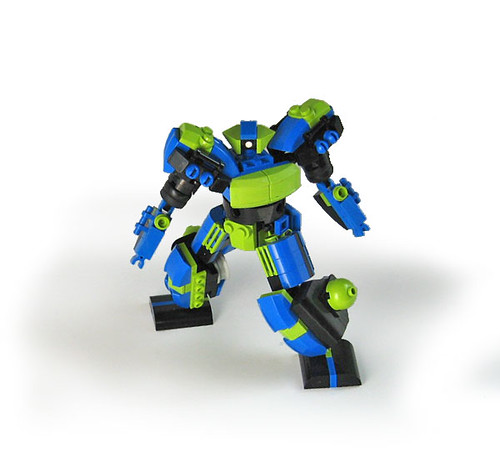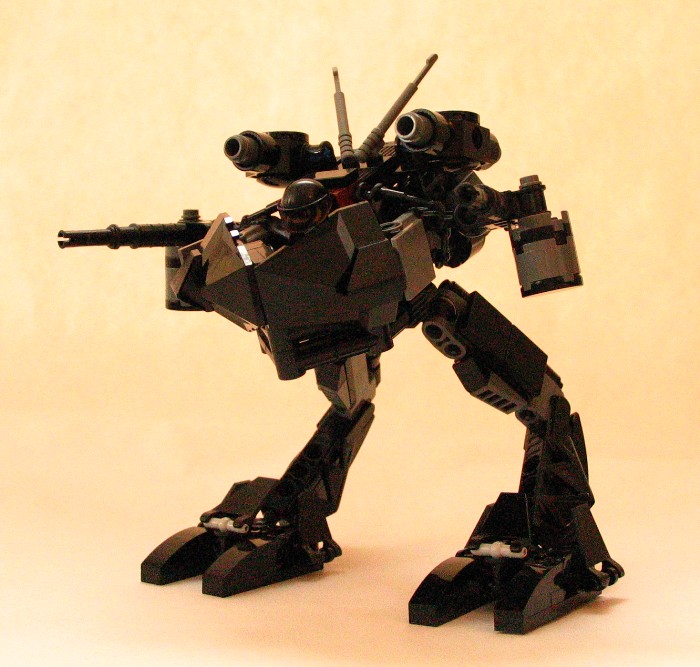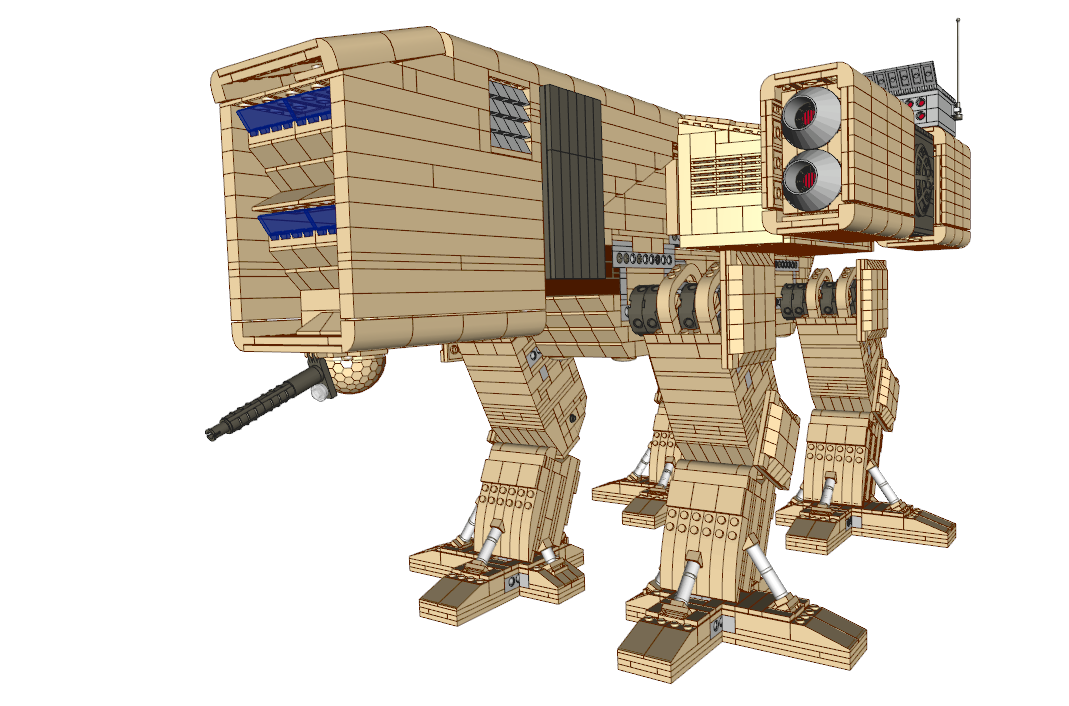It cannot be stressed enough to the importance light has to photography. Photo = Light, in the Greek. Forget about your subject, it is just a coincidence in the scene of Light you are capturing. If you photograph LEGO in a dark and dank basement, then this week's lecture is for you. Today I'm going to touch on the importance of light to photographing LEGO models, and how you can harness it sufficiently to aid in giving you great LEGO photographs.
Firstly we must consider the application for which the photographs are destined. Taking shots of your LEGO creations must display as much detail as possible, true colours, and depth. This week I'll only touch on the first and second. Detail is very key, the photos need to look nice but foremost must provide a full capture of the model. With this knowledge in hand we can determine the type of light which will best suit us. Direct light is out. Much too harsh, and creates distinct and deep shadows. You need diffuse light, or in layman's terms, a large light source. What qualifies as a large light source? A cloudy day, a light tent or light box, window light (and this is specific, so wait), or reflected light.
An overcast day is the easiest as it requires very little work from you, however, you're really dependent on the weather. If you want to take this route - remember that the heavier the overcast the less shadow you will have. You'll also probably end up with dull colours that must be punched up in post-editing.
A light tent or a light box is about as fancy as you can get. You'll need a cardboard box, a box cutter, some box tape, and some form of half-opaque/half-transparent paper (e.g.: tissue, wax, parchment, etc.). Then go here and follow the instructions. This should cost you next to nothing. From here, you can take a direct light source, like an off camera flash, a lamp, or direct sun and make it into a diffuse source by shining it through the semi-transparent paper. The all white interior will also help bounce around stray light and reduce directional shadows. For the purposes of LEGO photography, the more lights the better - however, watch that you avoid mixing different types of lights and I'll get into this latter in the post (WHITE BALANCE).
Lastly we come to window light. When referred to as a photographic light source, it means specifically diffuse light from a window - not direct sun. So you'll need an overcast day, or a window facing North (if you live in the Northern Hemisphere) or South (for those in the Southern Hemisphere) - this position will avoid direct sun all year round. Additionally with this light source you must make use of a reflector to bounce back light and reduce shadows. Ideally you place your model at the far side of a window (from yourself), so imagine: (you)--window--(model). Then get the reflector right beside you pointing at the model, and get it as close as possible to the model - if it isn't in your way it isn't close enough. More on reflectors to come.
With options 1 and 3, you will need a backdrop. White bristol board will do excellently, depending on the size of your model, larger SHIP size creations might require a bedspread. Curve your backdrop, from a vertical surface to a horizontal one, to eliminate the background. Use the matte side of the board, you'll want to avoid the possible problems glare might pose with the glossy side. White is best. Once you are comfortable shooting on white, begin experimenting with different colours, darker drops help with darker models, and coloured drops can spark visual contrast (Tim Z, Spook, is good with this). However, avoid coloured backdrops until you understand White Balance. If you are using something larger than bristol board, look for something with a fine texture: bed sheets are good, bath towels bad - get the idea?
Reflectors can be had just as easily. They MUST be white, for the intents and purposes of photographing LEGO. Foam core, canvas boards, bristol board, illustration board, white cardboard, you see where I'm going. As mentioned above, if you are using a reflector, it must be VERY, VERY close. Light falls off very quickly from them, and an extra 10cm can make or break your shadows.
White Balance. O muse, help me through this one. Some of you are aware that different light has different colour casts to it, even though its 'white'. Our eyes to a pretty good job of auto adjusting and we don't notice it all that much. However, take a photo with a daylight white balance with incandescent bulbs and you'll understand how important this is. White Balance is all about getting neutral whites, without any colour cast. Cameras are able to adjust to specific temperatures of colour to neutralize whites, but only one at a time. What this means is that if you start mixing daylight with lightbulbs, incandescent with flourescent, you aren't going to be able to fix your colour cast without some intense and impressive photoshop maneuvering. So don't. Flash = Daylight. For more info on Colour Temperature see wikipedia: [link]. Do yourself a favour, stick to one light colour, set your camera accordingly, and be merry.
Okay, I've done all you said, but my photos are all grey!
18% grey. What? Okay, here's the deal. Computers level tone from 0 (black) to 255 (white) with 8-bit colour. Value #128 is also known as 18% grey. Camera light meters read scenes and expose to achieve an average of 18% grey, because generally this works. Experiment: shoot a white piece of paper (as the only thing in frame) on your camera's auto setting with ample light, and it will still come out grey. So when you photograph with a white backdrop your camera wants to make that 18% grey. Solutions? Either in manual exposure, or with exposure compensation you can 'overexpose' (by your cameras meter) until you actually get a proper exposure. Alternatively, if you can lock your exposure (as in, set it on something and then keep it set the same even while photographing something entirely different), make a large wall of dark grey bricks and give it ample light, then fill your frame with it and take an exposure reading. Dark grey is probably fairly close to 18% grey. Try it, and shift either way until your exposure is proper.
Note that if you are using a dark backdrop, like black per se, your camera will try and overexpose to make that black grey. Learn to know what you camera is doing and act accordingly.
I hope that all wasn't too much to take. If you're lost, read through it again, slower around the parts that confuse you and use google to do some more research. Once you get your head around it, it isn't hard and you'll wonder how you managed to conjure up half-decent shots before. Next week I'm going to move on to the taking of the photos, shutter speeds, apertures and tripods galore!









